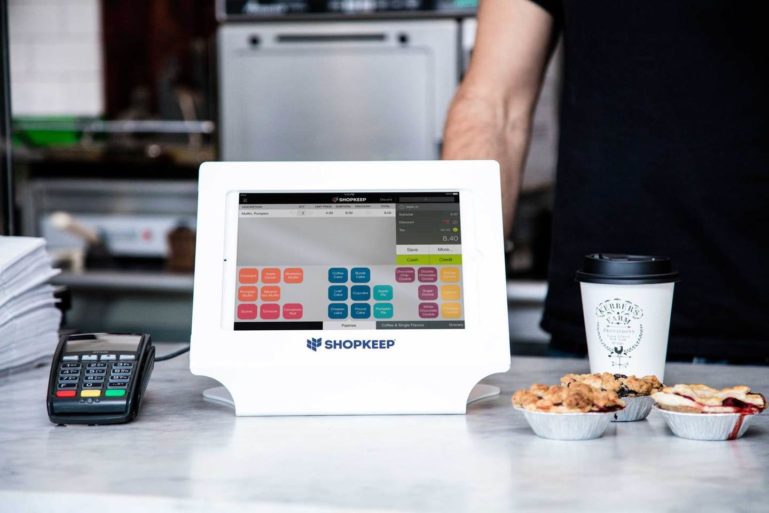
What Is a Sales and Inventory System, and Do I Need One?
Keeping track of sales and inventory is harder than it seems.
This is why having a retail software for small business is integral to the health of your business. What was once a simple matter of handing money to a cashier and walking away with an item has become more complex, with countless goods changing hands nearly anywhere and sales taking place virtually everywhere.
Increasingly, retail operations are turning to sales and inventory systems to help them keep on top of their business. The demand is so great that PRNewswire reports that the global retail automation market is expected to exceed $275 billion by 2020. That’s a huge chunk of change, but why so popular? Here’s a sales inventory system introduction that will examine exactly why they have become so prominent in the industry.
Why So Popular?
“A sales and inventory system is a software-based business solution used to simultaneously track sales activity and inventory,” So, what exactly is a sales and inventory system? “A sales and inventory system is a software-based business solution used to simultaneously track sales activity and inventory,” explains the Houston Chronicle. “Manufacturers and trade resellers can both benefit from a thorough solution, where a single transaction entry records necessary details on the customer, products purchased, price and date, while also updating inventory levels.”
More specifically, retail POS software is a solution that allows for more efficient transactions at the point of sale by monitoring how certain items are performing, improving inventory control by automatically tracking where all inventory is at all times, centralizing customer management through databases, and cutting costs by reducing the time spent manually entering data. In some cases, these terms are used synonymously.
With sales and inventory systems like retail store software, newfound efficiency has become accessible for businesses everywhere.

Capabilities of Sales & Inventory Software
The main goal of an extensive sales and inventory solution is to improve efficiency in recording for each transaction. Instead of maintaining separate record-keeping processes for the payment and inventory adjustment, you can manage each aspect with a single entry. And, as business is done more frequently on the go and shoppers are connecting with retailers via handheld devices more often, mobile technology is becoming indispensable for retailers.
As Internet Retailer reports, 75 percent of store shoppers use their mobile devices while shopping, while 25 percent of those make a purchase on their mobile devices while in-store.
POS retail software can be a way to capitalize on the growing popularity of mobile wallets, allow for contactless payments, reduce the need for countertops, and sell inventory outside of brick-and-mortar locations.
SEE ALSO: Essential Tips on How to Choose a Retail POS System
Security is also a factor worth considering for retailers wondering what is a sales and inventory system and if the investment makes sense for them. Retailers are all too familiar with the reality of data breaches in recent years, and how security risks may be hindering their sales. Connexity found that the recent frequency of security breaches has left nearly one-third of buyers feeling reluctant to make purchases both in store and online.
Sales and inventory systems, however, can beef up security with multi-level encryption, password-restricted access, and tokenized credit card processing, as well as other high-tech protection features.
Making Your Purchase Decision
If you decide to purchase a sales and inventory system, do your research first and make sure you have a solid introduction to what a sales and inventory system is. Sit down with your staff and decide which features are important to the health of your business. Then, set a budget that’s fair, but flexible. While a retail business will almost always come out on top when investing in a POS system, some systems will be sounder investments than others.
Make sure whatever systems you’re considering are built to deliver on their promises. Look for features that will improve accuracy in inventory and product management, as well as streamline interactions between employees and shoppers. Make sure the system provides insight (through reporting and analytics) into your sales and inventory data, and also that this information can be integrated into marketing and sales objectives.
It’s also worth considering how the person or department in charge of your business’ inventory will be able to use a given system. Before making a purchase, there should be a clear plan in place for training and implementation. Ideally, a sales and inventory system will help your employees quickly view what items are selling well, the time of day those items are most popular and what items need to be reordered to keep your sales flowing.
Finally, when comparing retail POS systems, you can save yourself trouble in the long run by choosing a system that’s easy to implement and use. The installation process should be fast and simple and the interface should be easy to read and understand. In addition, managers should be confident that they can train employees on the new system in less than an hour.
One piece of research we highly recommend is visiting other stores that have the sales and inventory system in place and interviewing shop owners about the benefits and complications they have experienced. Bring a prepared list of questions that relate to your specific needs. If a business has truly enjoyed their experience, a manager will say so. You can also read reviews and case studies online through various third-party research sites. Once you know what a sales and inventory system is and you’ve done your preliminary research, ask to be taken through a free demo of the system. This will give you a better taste for user experience and a chance to see how the software actually works.
Want to try ShopKeep for yourself?
Just answer a few easy questions.
Need help finding the right point of sale?
Just complete the form. We’ll call you right back to explain how ShopKeep can work for you.
Hit the ground running.Sprinting, in fact!
Read our free, comprehensive guide, Small Business 101, to learn all you need to know about starting a thriving business.

